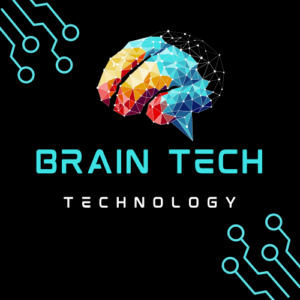Brain Technology: A Comprehensive Overview
Brain technology encompasses a diverse array of disciplines and innovations aimed at understanding, enhancing, and interfacing with the human brain. This rapidly evolving field integrates advances in neuroscience, computer science, biotechnology, and engineering to develop tools and techniques that revolutionize our interaction with and knowledge of the brain. Below is an in-depth exploration of brain technology, covering its major aspects, applications, and implications.
1. Introduction to Brain Technology
Definition and Scope
Brain technology refers to any technology that interfaces with the brain to monitor, understand, or influence its functions. This includes both invasive and non-invasive methods for recording brain activity, stimulating neural pathways, and decoding brain signals.
Historical Context
The roots of brain technology can be traced back to early neurological studies and the development of electroencephalography (EEG) in the 1920s. Since then, advances in imaging techniques, computational power, and bioengineering have accelerated the field’s growth.
2. Brain-Computer Interfaces (BCIs)
What are BCIs?
Brain-Computer Interfaces are systems that establish a direct communication pathway between the brain and an external device. BCIs translate brain signals into commands that can control computers, prosthetics, or other devices.
Types of BCIs
- Invasive BCIs: These involve implanting electrodes directly into the brain. They offer high signal quality but come with risks such as infection and tissue damage.
- Non-invasive BCIs: These use external sensors, like EEG caps, to record brain activity. They are safer but often less precise.
Applications of BCIs
- Medical Rehabilitation: Helping patients with paralysis or severe motor impairments regain control over their environment.
- Neuroprosthetics: Enabling amputees to control prosthetic limbs with their thoughts.
- Communication: Assisting individuals with locked-in syndrome to communicate through thought-controlled typing systems.
3. Neuroimaging Techniques
Functional Magnetic Resonance Imaging (fMRI)
fMRI measures brain activity by detecting changes in blood flow, offering insights into brain function and connectivity. It’s widely used in research and clinical diagnosis.
Positron Emission Tomography (PET)
PET scans use radioactive tracers to visualize metabolic processes in the brain. They are useful in studying neurological diseases like Alzheimer’s.
Magnetoencephalography (MEG)
MEG measures the magnetic fields produced by neural activity, providing high temporal resolution data. It’s often used for pre-surgical planning in epilepsy patients.
4. Neuromodulation Techniques
Deep Brain Stimulation (DBS)
DBS involves implanting electrodes in specific brain regions to modulate neural activity. It is effective in treating conditions like Parkinson’s disease and severe depression.
Transcranial Magnetic Stimulation (TMS)
TMS uses magnetic fields to stimulate nerve cells in the brain. It’s a non-invasive technique used for treating depression and investigating brain function.
Transcranial Direct Current Stimulation (tDCS)
tDCS delivers a low electrical current to the brain through electrodes on the scalp, which can enhance cognitive function and treat neuropsychiatric disorders.
5. Cognitive Enhancement
Pharmacological Interventions
Nootropics, or “smart drugs,” are substances that can enhance cognitive function. They range from prescription medications for ADHD to over-the-counter supplements.
Neurofeedback
A type of biofeedback that uses real-time displays of brain activity to teach self-regulation of brain function. It has applications in treating ADHD, anxiety, and other conditions.
Brain Training Programs
Computerized programs and mobile apps designed to improve cognitive abilities like memory, attention, and problem-solving skills through targeted exercises.
6. Ethical and Social Implications
Privacy Concerns
As brain technology advances, concerns about mental privacy and the potential misuse of neural data become more pressing. Protecting individuals’ neural information from unauthorized access is crucial.
Equity and Access
The benefits of brain technology must be accessible to all, not just those who can afford it. Addressing disparities in access to these technologies is essential for their equitable implementation.
Enhancement vs. Therapy
The distinction between using brain technology for therapeutic purposes versus cognitive enhancement raises ethical questions. Society must consider the implications of enhancing human capabilities beyond their natural limits.
7. Future Directions
Integration with AI
Combining brain technology with artificial intelligence could lead to more sophisticated BCIs and neuroprosthetics, enhancing their functionality and responsiveness.
Advances in Miniaturization
Developments in nanotechnology and microelectronics will likely lead to smaller, more efficient neural interfaces and implants, reducing risks and improving user comfort.
Personalized Medicine
The future of brain technology includes personalized approaches to treatment, where interventions are tailored to an individual’s unique neural profile, optimizing effectiveness and minimizing side effects.
8. Conclusion
Brain technology stands at the frontier of human innovation, offering profound insights into the workings of the brain and the potential to transform numerous aspects of life. As we navigate its advancements, careful consideration of ethical, social, and practical implications will be paramount to harnessing its full potential for the betterment of humanity.
